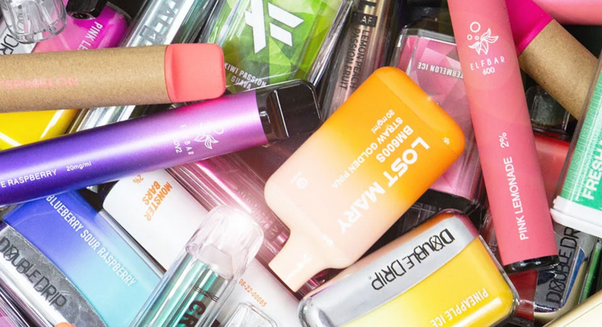The disposable vape ban has sparked widespread debate, particularly regarding its impact on young people. Disposable vapes have become increasingly popular among teenagers and young adults due to their convenience, affordability, and array of enticing flavors. As concerns about youth vaping rates have grown, governments and health organizations worldwide have pushed for stricter regulations, leading to discussions about outright bans on these products. Understanding the implications of such a ban is crucial in addressing both public health concerns and the behavior of young people.
Disposable vapes have surged in popularity largely because they offer an accessible entry point into vaping. Unlike reusable devices, disposables require no maintenance, refilling, or charging, making them highly convenient, especially for inexperienced users. Many young people are drawn to the wide range of flavors, such as fruit, candy, and dessert-inspired options, which mask the harshness of nicotine and make vaping more appealing. Social media has also played a significant role in normalizing vaping culture, with influencers showcasing these devices and further enticing young audiences.
The rising popularity of disposable vapes among youth has raised alarm bells among health professionals and policymakers. Nicotine addiction is a primary concern, as these devices often contain high concentrations of nicotine salts, which can be more rapidly absorbed into the bloodstream compared to traditional cigarettes. Young brains are particularly vulnerable to the effects of nicotine, with evidence suggesting that early exposure can lead to long-term addiction and cognitive impairments. Additionally, there is concern that vaping could act as a gateway to smoking traditional cigarettes or experimenting with other substances.
In response to these concerns, governments around the world have been considering or implementing bans on disposable vapes. The primary objective is to curb youth access and prevent the normalization of nicotine consumption among young people. By removing disposable vapes from the market, policymakers hope to disrupt the supply chain that makes these products so easily accessible. Retailers would face stricter regulations, and manufacturers would be forced to focus on products intended for adult smokers seeking harm reduction.
For young people, the implications of a disposable vape ban are multifaceted. On one hand, the ban could help reduce nicotine addiction rates and protect adolescents from long-term health consequences. Limiting access to disposable vapes could deter experimentation and prevent a new generation from becoming dependent on nicotine. Schools and communities may see a decline in vaping-related incidents, and public health initiatives could redirect their focus toward education and prevention.
On the other hand, critics argue that a ban could unintentionally drive young people toward unregulated markets. When legal avenues are closed, black markets and online vendors often step in to fill the gap, offering products that may be even more dangerous due to the lack of quality control. Without proper regulation, these illicit products could contain harmful additives or incorrect nicotine levels, posing additional risks to young users.
Furthermore, the social dynamics surrounding vaping cannot be overlooked. Peer influence plays a significant role in youth vaping culture, and the allure of rebellion against authority could make banned products even more desirable. Young people might turn to creative means to obtain disposable vapes, perpetuating a cat-and-mouse game between regulators and consumers. Addressing the root causes of youth vaping requires more than just restricting access; comprehensive education campaigns and support systems for nicotine addiction are essential components of a holistic solution.
In addition to the health implications, the disposable vape ban could also reshape social behaviors and perceptions. For some young people, vaping has become a social activity, a way to bond with peers and navigate social environments. Removing disposable vapes from the equation might prompt shifts in these dynamics, encouraging healthier habits and reducing peer pressure to engage in risky behaviors. Alternatively, it could lead to the adoption of other substances or behaviors to fill the void left by the absence of disposable vapes.
The economic impact of a disposable vape ban is another consideration. Many small businesses and convenience stores rely on vape sales as a significant revenue stream. A sudden ban could lead to financial losses and job displacement, particularly in communities where these businesses play a crucial role in the local economy. Additionally, manufacturers of disposable vapes would either need to pivot toward producing reusable devices or face potential shutdowns. While the primary goal is public health, the economic ripple effects could not be ignored.
Public perception of vaping could also transform. As disposable vapes become less visible and accessible, the normalization of vaping among young people might gradually decline. Media narratives could shift away from glamorizing vaping culture, focusing instead on the risks and consequences. Schools and communities would have the opportunity to reinforce positive health messaging and provide resources for those struggling with nicotine addiction.
The disposable vape ban is a complex issue with far-reaching implications for young people. While the intention behind the ban is to protect public health and curb youth vaping rates, the potential consequences are multifaceted. Reducing access to disposable vapes could prevent many young people from developing nicotine addictions and experiencing associated health risks. However, it could also push some toward unregulated markets or alternative substances, perpetuating a cycle of risky behavior.
Ultimately, the success of a disposable vape ban depends on a comprehensive approach that combines regulation with education, support, and community engagement. Empowering young people with knowledge about the risks of vaping and providing resources for those who want to quit are crucial steps in creating a healthier future. As policymakers, educators, and health professionals navigate this evolving landscape, the focus should remain on protecting youth while fostering environments that promote informed decision-making and long-term well-being.

Ross, an exam specialist with a passion for education, writes comprehensive articles on exam results and admit cards. His expertise ensures students receive reliable information and useful tips to excel in their exams.

























